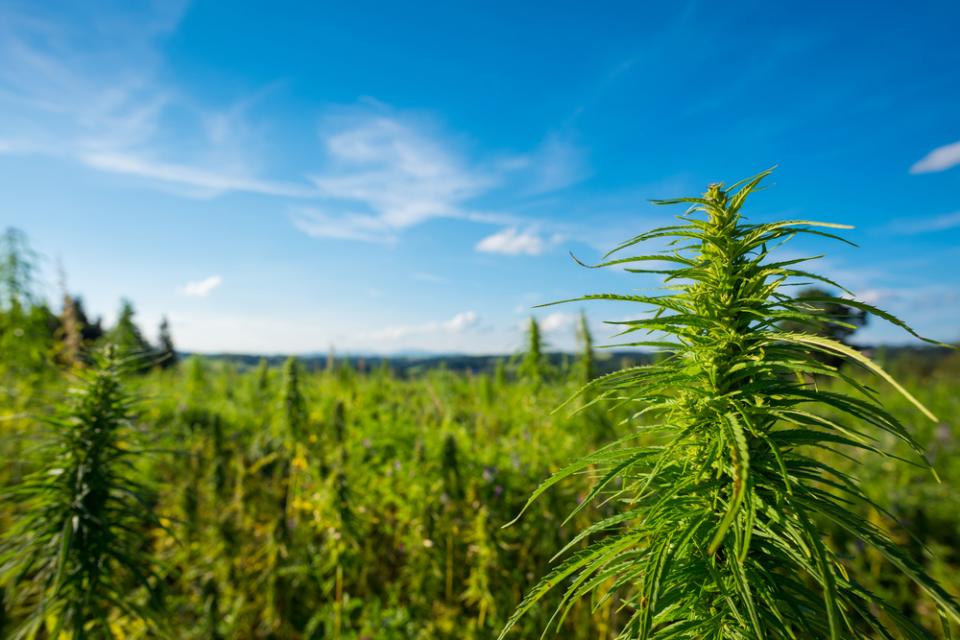In America, new laws have seen an increase in the number of licensed farmers and the level of outdoor flower production, meaning more growers are enjoying the benefits and lifestyle associated with growing organically outdoors. There is also a very strong outdoor scene in Europe, so below are five tips for increasing flower production to help bump up those harvests.

By Stoney Tark
Genetics Are Everything
Before you even plant your seeds in the springtime, you should know about your genetics. How they will stand up to the climate you live in, and if you are growing for large-scale production, then reliable, industry-backed varieties are the way forward. Growing a small-yielding variety even under the Californian sunshine will only mean that your end result will be a low harvest weight, even if the flowers are 10/10.
In the same sense, if you grow a huge-yielding variety in an environment that is not ideal, the result will be a big yield, however, the quality of the flowers may be questionable. The point is: if growing for production value and if your overheads and investors need to see results, as long as your high-production genetics gel well with the growing environment, then there is no reason why you cannot achieve maximum quantity and high levels of quality.
Plant training during the long days
Dependant on where you are in the world, you may plant your seeds in March, April or May and will begin their growing cycle. This is the window where you will want to train your plants in a certain way, that is pre-planned to a set canopy design. The design will be in correlation with your space, experience, plant count as well as the strain you may be working with. There are several types of training and they are known as low-stress training, which consists in tying plants down to manipulate Auxin production, topping, to remove one head and create two, and fimming, to promote a wider, bushy canopy.
High-stress training involves super cropping, where the stem is snapped and the inner cell walls are broken until being naturally repaired by the plant. The other is pruning. This is classed as high-stress because all of the lower growth below the top few nodes will be totally stripped. When all of these are incorporated, then the plants will become very strong, sturdy, highly resistant to wind and will be dense in structure as the days begin to get shorter.
Using Beneficial Bacteria
Depleted farmlands or an old sundried medium can always be restored by adding microorganisms to the earth. Aerobic bacteria that naturally live in the soil culture will improve the uptake of available nutrients and the ability to retain moisture longer as well as to create a symbiotic relationship with the roots. Sourcing beneficial bacteria and fungus is quite easy and can be done online or at most grow shops. One really interesting method to obtain your own indigenous microorganisms (I.M.O) is to use cooked rice and allow a soil sample to contract the Mycelium.
Once the fungi have begun to grow over the rice, there are preservation methods incorporated to allow a farmer to keep a maximum shelf life on their microbes. This style of farming is known as Korean Natural Farming (K.N.F) and has been used for thousands of years. Supercharging the earth in such a way will improve the longevity of the land and regenerate the depleted earth at the same time. As many people know, the gardens in Korea are some of the most spectacular gardens in the world, so by applying this inexpensive, highly effective technique into your garden can be extremely beneficial.

Feed Them Sugar!
Understanding the biological process that takes place between the plant producing its own sugars via photosynthesis, and the root system using carbon bonds to feed the microbes is essential. Carbohydrates will add weight to a flowering crop and will be the main food source for the thriving microbial colony. Unsulfured Blackstrap Molasses is an excellent way to feed the microbes when brewing a compost tea, for being packed with minerals and nutrients that the plant will require during blooming.
You must make sure the molasses is sulfur-free; otherwise, it will cause a massive disruption to the beneficial bacteria. Honey can be used also and is very rich in carbohydrates. It is worth knowing, though, that, besides Iron, Calcium, Magnesium, Selenium, Potassium and Vitamin B6, molasses contains a much higher mineral count than honey
Felt Pots For Big Root Development
The root zone is the engine behind what can be seen above soil level, so keeping the roots in an environment where they are root bound free, will ensure an expansive rooting system. The culture in California is to use felt pots as these allow air to pass through allowing the roots to naturally prune. There is a major misconception among growers who think that plants that are root bound are a good thing. Even if the root zone is bright white, healthy, happy and teaming with microbes, a root bound plant will become debilitated and limited to the way it can grow and feed. Felt pots are easy to make and not so expensive to buy either, they can be re-used and customized to fit any size needed.
Some farmers in California use 700-gallon fabric pots with clean, organics incorporated and the harvests are staggering. Plastic pots can be turned into root pruning pots by simply adding holes around the sides. The reason why this is necessary is to allow the roots to come into contact with the air and prune themselves into two. The same way that when topping a plant causes two new growth shoots to develop, the root hairs will perform in the same way and over time an enormous root mass is achieved leading a much larger harvest.





Give us your feedback
Your rating (between 1 and 5)
1 2 3 4 5Leave a comment